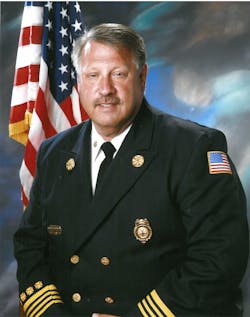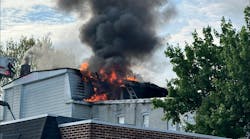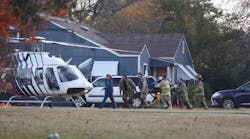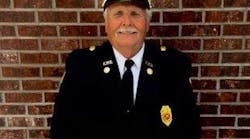One of my routines every day is to stay in tune with what is happening in the fire and EMS profession. I check for the daily news drops that I get; I look at some of my favorite websites including Firehouse.com; and I skim through some of the professional journals that get dropped on my desk monthly.
But on this particular morning, the news drop had some particularly disturbing information again. Two Detroit paramedics had been seriously injured when an agitated male repeatedly slashed and stabbed their faces and hands with some type of sharp object. According to the Detroit fire commissioner, "It was a horrific scene. The scene inside of the rig is horrific. Their injuries are horrific. Both of the EMTs are going to require some extensive surgeries. The injuries — they came to within inches of dying."
Both paramedics were able to escape and eventually drive themselves to the hospital. Detroit Receiving Hospital reported both in serious condition.
The incident reportedly started when the two paramedics were dispatched to a call for a woman who had an ankle injury on the street near a homeless shelter. The person who assaulted the paramedics was with the woman. The paramedics described the man as being agitated and being upset for some reason. At some point he produced a weapon and began slashing and cutting the paramedics.
This case highlights what most of us know – this can be a dangerous job. Anything can happen on any call! Let me count the ways!
1. Fall and get hurt getting to your apparatus
2. Injure your ankle if you slide a pole
3. Pinch your finger in the door of the apparatus
4. Get into an accident responding to the scene
5. Step off the apparatus injuring your ankle, or trip over some hazard on the scene
6. Hurt your back lifting a patient
7. Stick yourself with a contaminated needle
8. Get assaulted by a patient
9. Get assaulted by a bystander
NIOSH and the National Highway Traffic Safety Administration’s EMS office have looked at the EMS profession and published data detailing the extent of injuries that occur in EMS. This also included firefighters who were performing some form of EMS such as lifting a patient, working in an ambulance, rescue, or patient transport.
Their study reflected a total of 20,200 non-fatal injuries during 2013, with 69 percent of those happening to males. The majority of injures were classified as sprains and strains, followed by contusions/abrasion and punctures and lacerations.
The study also looked at the types of events that cause the injuries and determined that the majority were overexertion and bodily reaction, harmful exposures, contact with objects and equipment, falls, slips, and trips, transportation incidents and violence.
While all of this sounds scientific and it was completed by an epidemiologist, the reality is you stand a pretty good chance of getting hurt at some point in your career if you perform EMS work of any type. I don’t need some study with standard deviations to tell me what I already know. Doing EMS is inherently dangerous.
Why can’t EMS think like the airline industry? Every possible way you can crash a plane has already been done. The airline industry has put multiple checks and balances in place and changed systems to prevent crashes. Last year, there were 102,465 flights per day around the world. That is roughly 37.4 million flights annually. And how often do you hear of a plane crashing? Yes, they happen from time-to-time, somewhere in the world and usually CNN and the other alphabet channels break in and announce it. But they do not happen that often. When is the last time you can think of a plane crashing in the United States? If they do, it is rare.
So why can’t EMS do this? We have not figured out any new ways of injuring EMS professionals. Every possible way you can get hurt performing EMS has been done. Yes, this may be lofty thinking since the airline industry is mainly operating mechanical devices and their system checks and balances are designed to prevent mechanical failures, but they do have some human elements that they needed to fix over the years.
I think it is too high of an expectation that we will remove 100% of all EMS injuries. But there is nothing wrong with addressing the most serious and putting systems in place to prevent injuries.
As an example, a staging policy on any shooting, stabbing, assault or other type of violent call is a necessity. Thirty years ago, fire engines and ambulances did not stage away from a violent scene and wait for the police to make sure it was secure. Many firefighters, EMTs, and paramedics found themselves first on the scene and possibly bring confronted by the assailant(s) or in the middle of a family fight. I have no doubt these policies have saved lives and prevented injuries. Unfortunately, there are still some departments that do not stage.
Our lives and our health are the most important things we possess. I encourage all of you to think safely, do not become complacent when on a call, and make sure you go home to your families and loved ones at the end of your shift.






